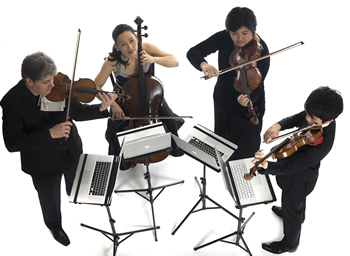Marc-André Hamelin returned to Duke University for a recital in Baldwin Auditorium, presented under the auspices of Duke Performances‘ Piano Recital Series. The room was substantially full for a program that included several rare works, a lineup that, as realized, again demonstrated that Hamelin can play anything and in the process make convincing cases for everything he touches.
His intelligence, his keen artistic insight, his amazing technical prowess, and his intense concentration created magic throughout this substantial recital, starting with a truly commanding reading of the Busoni transcription of Bach’s Chaconne. Who would dare begin a program with this? Well, Hamelin, for one. It’s been done here in its original incarnation, on modern violins and in HIP renditions, and in this big Romantic transcription and also in Brahms’ version for the left hand (but not yet, for some reason, in Casella’s striking orchestration). One wouldn’t want to do without the real thing, but when it comes to filtering Baroque music through a near-contemporary prism for performance on a great big concert grand, it’s hard to beat Busoni, and Hamelin brought that master’s sonic update to vivid, sometimes almost overpowering life. The crowd went nuts. But perhaps some of that enthusiasm was merely his presence among us again, after what seemed like a very long absence – his last recital at Duke was in 2011, and his previous gig, before that, had been five years earlier still, in 2006. (He’s played elsewhere in our state with considerable frequency, and those performances have been well documented – see CVNC‘s archives for reviews.)
He turned next to two sonatas by Samuil Feinberg (1890-1962) (who as a pianist left us some impressive Bach of his own, available on YouTube). These sonatas, Nos. 5 and 6 of the dozen he composed (available on CDs here), received the passionate commitment we’ve come to expect from Hamelin, and if it seemed as if we were experiencing this music for the very first time, well, some of us were. At first hearing, they seemed somewhat amorphous and indeed more like fantasies than sonatas as we have come to understand them – which likely means they merit further study. (FWIW, William S. Newman does not mention them in his massive study of the sonata.) Still, they clearly spoke to some members of the audience, and there were flashes of recognizable genius therein, ranging from impressions of Impressionism to some of the mysticism we associate with Scriabin (see a recent CVNC article for much more information about this composer’s use of color) to some of the angularity we encounter in late Prokofiev. For this listener, however, reservations about the works’ form remain – and of course it would help to see the scores.
Perhaps to cleanse the musical palate there followed, after the intermission, a curious set of song transcriptions with brief but varied elaborations and embellishments. The tunes were among those sung by Charles Trénet, whose work Alexis Weissenberg found fetching enough to adapt and record – anonymously, at first; as Hamelin explains in his (uncredited) program notes, he in turn transcribed the Weissenberg recording, and the results were utterly charming. (Click here for more information.)
Compared with these pieces, Castelnuovo-Tedesco’s Cipressi, Op. 17 (1920) [cited in the program as if it were Bach], emerged as a serious and sometimes weighty piece. We hear too little of his music – in an earlier generation, Segovia and Toscanini championed him – and this depiction of Tuscan landscape hinted at what we might be missing.
The formal finale was devoted to Chopin, in the form of the Polonaise-fantasy, Op. 61, and the Scherzo No. 4, Op. 54 – deep, profound music in both instances, the depths of which Hamelin plumbed with astonishing commitment. This is not your grandfather’s Chopin, nor is it Chopin of any sort of popular ilk. This is deep stuff, and we were richly blessed to hear these pieces, to experience them as Hamelin revealed them – even if they demanded much of the listeners at the end of an already demanding program – and never mind that pianist, who can – and does – play everything.
At the end of this amazing recital, Rachmaninoff’s Prelude, Op. 23/2, and Schumann’s “Herberge,” No. 6 of Waldszenen, Op. 82, brought the concert to a close.
This program was in many but not all respects identical to one he’d played two nights earlier in Carnegie Hall’s Stern Auditorium. Time was when we had to go to New York to hear the best art. Thanks to Duke Performances (and other presenters), New York (and much, much more) now comes right here, to us! This series continues on Jan. 25 with Jeremy Denk. See our calendar for details.
***
There are two Great Commandments when it comes to concert presentation: Start on time. And the second is (as they say) like unto it: Do not further delay late-starting programs with extraneous remarks from the stage. When this one finally got underway, it was almost as late as Duke concerts used to begin, under the Ancien regime. ‘nough said?












